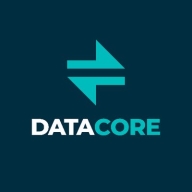

DataCore SANsymphony and Red Hat Hyperconverged Infrastructure compete in the enterprise IT domain. Red Hat often has an upper hand due to its comprehensive feature set and perceived long-term value.
Features: DataCore SANsymphony features efficient storage management, advanced caching, and dynamic auto-tiering. Red Hat Hyperconverged offers containerization, automated management, and is tailored for scalability and flexibility.
Room for Improvement: DataCore could enhance integration with newer tech and expand its feature set for dynamic environments. Red Hat could improve its support for diverse storage architectures and refine its initial setup complexity.
Ease of Deployment and Customer Service: Red Hat integrates seamlessly with existing environments focusing on minimal downtime. DataCore's deployment aims to reduce complexity. DataCore offers strong customer support, while Red Hat enhances its support with comprehensive documentation and a community-driven approach.
Pricing and ROI: DataCore offers competitive setup costs focusing on operational savings. Red Hat incurs higher initial costs but offers substantial returns due to its scalability and future-ready features.
| Product | Market Share (%) |
|---|---|
| DataCore SANsymphony | 2.4% |
| Red Hat Hyperconverged Infrastructure | 0.9% |
| Other | 96.7% |

| Company Size | Count |
|---|---|
| Small Business | 36 |
| Midsize Enterprise | 12 |
| Large Enterprise | 21 |
| Company Size | Count |
|---|---|
| Small Business | 1 |
| Large Enterprise | 6 |
Experience peace of mind with DataCore SANsymphony, the ultimate software-defined storage solution alleviating storage management challenges. Say goodbye to the complexities of managing different storage tiers and disruptions with SANsymphony's block-level storage virtualization technology, empowering you to automate capacity provisioning and data placement across diverse storage environments including SAN, DAS, HCI, and JBOD. Break down silos, control data placement, meet business continuity objectives, boost performance, and seamlessly expand or refresh hardware with SANsymphony. Benefit from features like asynchronous replication for disaster recovery, minimizing data loss, accelerating application responsiveness, and integrating new technology non-disruptively. Trusted by industry leaders like NASA, Thorntons, Inc., and TUI Cruises, DataCore SANsymphony guarantees unparalleled flexibility, scalability, and reliability, ensuring uninterrupted data access and application availability while reducing storage costs and inefficiencies.
Red Hat Hyperconverged Infrastructure - based on our leading OpenStack and virtualization platforms - provides co-located, scalable, software-defined compute and storage, driven by Red Hat Ansible Automation on economical, industry-standard hardware.
We monitor all HCI reviews to prevent fraudulent reviews and keep review quality high. We do not post reviews by company employees or direct competitors. We validate each review for authenticity via cross-reference with LinkedIn, and personal follow-up with the reviewer when necessary.